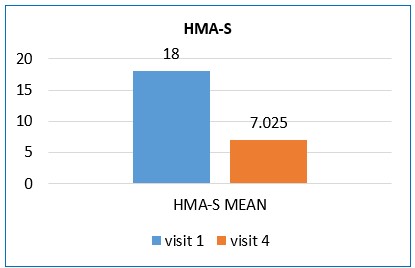A pilot study to evaluate the safety and efficacy of ‘Canna Relief’ Stress Management Oil after oral consumption in patients with Stress and Mild to Moderate Anxiety Disorder
DOI:
https://doi.org/10.21760/jaims.9.3.4Keywords:
Anxiety, Mansik Vyadhi, Canna, Relief stress management oilAbstract
Background: Clinical manifestation of Anxiety is included in as a Mansik vyadhi in Ayurveda. Anxiety disorders are the world’s most common mental disorder affecting 4.05% of global population, translating to 301 million people. The prevalence of anxiety disorders has been rising over the last three decades. Due to the wide spectrum of diseases, much prevalence in society, and lack of effective medicines, the disease has been chosen for the trial. Aim: The aim of this study was to study the efficacy of CannaRelief stress management oil in the management of Anxiety. Materials and Methods: 40 clinically diagnosed patients were selected and administered CannaRelief stress management oil – 4 drops sublingual in night after food for 60 days. Study Design: It was a single‑center, single arm, open‑label, phase 4, pilot study. Results: The drug showed statistically significant results in terms of subjective parameters. It was found that after taking medicine sleep quality was increased in maximum no. of patients. 50% patient showed reduced level of salivary cortisol level and 60% patient showed reduced level of salivary amylase. salivary amylase showed significant result after treatment. Conclusion: CannaRelief stress management oil is effective in the management of Anxiety disorder.
Downloads
References
More.” American Psychological Association, American Psychological Association, 2019.
Selye H. Endocrine reactions during stress. Anesthesia & Analgesia. 1956;35:182–193. [PubMed]
Understanding the Stress Response - Harvard Health." Harvard Health. N.p., n.d. Web. 23 May 2016.
Institute of Health Metrics and Evaluation. Global Health Data Exchange (GHDx), (https://vizhub.healthdata.org/gbd-results/, accessed 14 May 2022
Thibaut F. The role of sex and gender in neuropsychiatric disorders. Dialogues Clin Neurosci. 2016;18(4):351-352.
Agnivesha, Charaka Samhita, revised by Charaka and Dhridabala with the Ayurveda Dipika commentary of Cakrapanidatta, edited by Vaidya Yadavaji Trikamji Acarya, Chaukhambha Sanskrit Sansthan, Varanasi, 5th edition, 2001, sharira 1/102
Agnivesha, Charaka Samhita, revised by Charaka and Dhridabala with the Ayurveda Dipika commentary of Cakrapanidatta, edited by Vaidya Yadavaji Trikamji Acarya, Chaukhambha Sanskrit Sansthan, Varanasi, 5th edition, 2001, vimana 5/13
Bhairava, Anandakandah., Siddhiprada Hindi translation by Prof. Siddhinandan Mishra, Amrutikarana visranthi, Ullasa 15, Sloka 465, First Edition, Chaukhambha Orientalia Varanasi: 2008, p. 304
Touwn M. The religious and medicinal uses of Cannabis in China, India and Tibet. J Psychoactive Drugs: 1981. 13 (1). P. 23-34
Houghton PJ. The scientific basis for the reputed activity of Valerian. J Pharm Pharmacol 1999;51:505 12.
Kashinatha Sastri et.al.; Charaka Samhita with the Vidyotini Hindi Commentary; Chaukhambha Bhaarti Academy Varanasi, reprint 2016; Vimana sthana 6/5 pg. No.
Razack, S., Kandikattu, H. K., Venuprasad, M. P., Amruta, N., Khanum, F., Chuttani, K., & Mishra,A. K. (2018). Anxiolytic actions of Nardostachys jatamansi via GABA benzodiazepine channel complex mechanism and its biodistribution studies. Metabolic brain disease, 33(5), 1533-1549.
Singh N, Kulshrestha V K, Gupta M B and Bhargava K P, Pharmacological studies on cyprus rotundus, Indian J Pharma, 1969, 1(2), 9.















